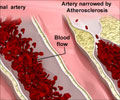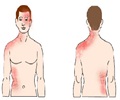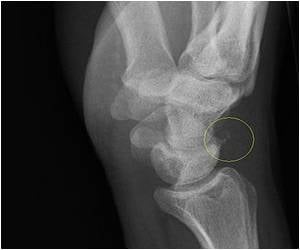A genetically engineered herpes simplex virus, primarily known for causing cold sores, may help keep arteries “free-flowing” in the weeks following angioplasty.
A genetically engineered herpes simplex virus, primarily known for causing cold sores, may help keep arteries “free-flowing” in the weeks following angioplasty or stent placement for patients, according to research published early in the online edition of PNAS (Proceedings of the National Academy of Sciences of the United States of America).
Christopher Skelly, MD, assistant professor of vascular surgery at the University of Chicago Medical Center, and the study’s lead author says, “One of the drawbacks of balloon angioplasty to open blocked arteries and the use of stents to keep them open is that arteries sometimes experience aggravation from the procedure. The balloon angioplasty, in addition to opening the artery can lead to smooth muscle cell proliferation, similar to formation of scar tissue, known as neointimal hyperplasia. This scar tissue can restrict blood flow not long after the procedures, leading to a recurrence of symptoms. A significant number of these cases end up requiring further intervention to address this complication.”Researchers at the University of Chicago noted that in recent years, genetically engineered herpes simplex virus studied for its efficacy against malignant tumors of the central nervous system and the liver was blocking certain types of cell death and proliferation of surviving cells. They wanted to test this effect in arteries following angioplasty therapy.
The researchers studied a rabbit model that replicates the restenosis or renarrowing after angioplasty. Rabbits that underwent angioplasty alone experienced significant narrowing of the artery. Rabbits exposed to the herpes simplex virus during angioplasty had minimal changes in the arteries. The smooth muscle cell proliferation which causes the restenosis was very low in the group treated with herpes and remained high in the untreated group.
One undesirable, yet expected outcome of angioplasty and stent placement is the disruption of the artery’s endothelial layer, which forms the inner lining of the artery. Loss of this inner layer predisposes the artery to blood clot formation which has been a recent concern with drug eluting stents. The researchers found that the endothelial layer was partially restored at 14 days and completely restored at 28 days post-balloon angioplasty in the group treated with the herpes virus.
“The ability to target the smooth muscle cells that cause the narrowing, and regenerate the endothelial cell lining is an important finding,” noted Skelly.
“This study is an important step in the application of genetically engineered herpes simplex viruses for treatment of vascular disease," Skelly added. "It suggests that genetically engineered viruses may have a significant impact on the outcomes of angioplasty performed in humans. Human trials would be the next step to test this theory.”
Advertisement
SRM /J











